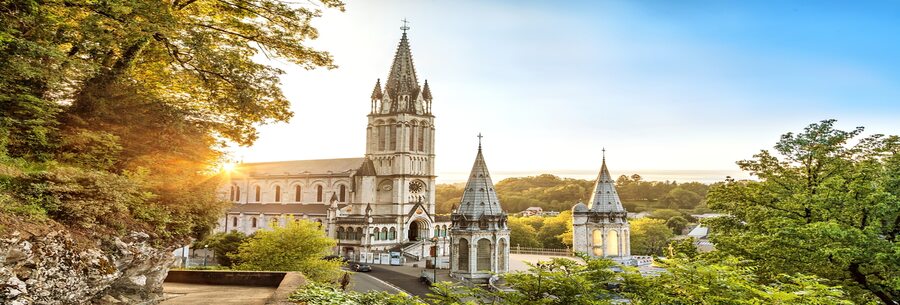A pilgrimage to Lourdes is an intense spiritual experience, marked by faith, prayer and a deep sense of contemplation. Lourdes, a town at the foot of the Pyrenees, has been a place of Christian devotion since the apparitions of the Virgin Mary to Bernadette Soubirous in 1858. Today, millions of pilgrims go there every year to reconnect with their faith, ask for healings or simply seek inner peace. Here's how a pilgrimage to Lourdes works, from arrival to participation in the spiritual rites.
Arrival at Lourdes
As soon as they arrive, pilgrims often feel a special emotion as they discover this sacred place. The shrine, which includes several basilicas, the Massabielle grotto, the pools and other places of prayer, is at the heart of the town. Pilgrims are generally welcomed in an atmosphere of warm hospitality, with volunteers and services dedicated to the sick and disabled, for whom the shrine pays particular attention.
Visiting the Massabielle grotto
The Massabielle grotto is the first place pilgrims head for. It was here that Bernadette Soubirous saw the Virgin Mary appear on several occasions. Many pilgrims touch the wall of the grotto as a sign of devotion and spend time in silent prayer. Water gushing from the spring is also available to pilgrims, who can drink it or take it home in bottles.
Participation in Masses and collective prayers
One of the central aspects of the pilgrimage to Lourdes is participation in religious celebrations. Masses are celebrated daily in the shrine's basilicas and chapels. Pilgrims gather to pray together, particularly at the international mass, which is celebrated in several languages and attracts faithful from all over the world. For many, these shared moments are an opportunity to strengthen their faith and experience spiritual unity with other believers.
Processions: a highlight of the pilgrimage
Two processions punctuate the spiritual life of Lourdes: the Eucharistic procession and the torch-lit Marian procession. The Eucharistic procession, which takes place in the afternoon, is a time of prayer for the sick. It is a special time when pilgrims gather to pray for the healing and consolation of those who are suffering. The torch-lit Marian procession in the evening is one of the most moving moments. Thousands of pilgrims march past holding candles, reciting prayers and singing hymns dedicated to the Virgin Mary. This illuminated procession creates an atmosphere of deep contemplation and inner peace.
The experience of the pools and water of Lourdes
Pilgrims have the opportunity to bathe in the pools of Lourdes, where spring water is used. This gesture is seen as an act of spiritual purification and a request for healing. Many people come to Lourdes with the hope of physical healing, but even those who do not experience a physical cure often leave with inner peace and a sense of spiritual renewal.
Measures of personal recollection
Between moments of collective prayer and processions, the pilgrimage to Lourdes is also marked by times of individual recollection. Pilgrims spend time in silence in the various chapels of the shrine or at the grotto, where they meditate, pray or deposit their prayer intentions. These moments are essential for pilgrims seeking to reconnect with their faith or find comfort in a spiritual setting.
Solidarity with other pilgrims
A pilgrimage to Lourdes is also a community experience. Pilgrims often share moments of fellowship, swap stories and support each other. Lourdes is a place where strong bonds are forged between people from different backgrounds, united by their common faith and spiritual quest.
Experiencing a pilgrimage to Lourdes is much more than a simple visit: it is a profound faith experience, marked by prayer, communion with other believers, and the hope of spiritual or physical healing. Lourdes offers a unique setting in which to recharge your batteries, reconnect with your faith and find inner peace, whether you come in search of miracles or simply to meditate and pray.




















